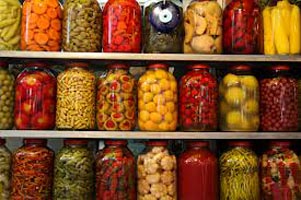Introduction: The rise of regional pickle brands
Pickles have long been a staple of culinary traditions around the world. But lately, something exciting has been bubbling up in the food industry. Regional pickle brands are emerging from local markets and making their mark on international stages. These savory delights, often steeped in tradition, are catching the attention of gourmet enthusiasts far beyond their hometowns.
With flavors that tell stories and recipes passed down through generations, these pickles offer more than just taste—they provide a sense of place and culture. As consumers seek out authenticity in their food choices, regional pickles are stepping into the spotlight like never before.
This blog will explore how these humble jars filled with crunchy goodness are transitioning from hyperlocal favorites to global sensations. Join us as we dive into success stories that reveal what it takes for traditional pickles to make waves across borders!
Hyperlocal to national success stories
Regional pickles often start as small, family-run businesses. These brands celebrate local flavors and traditions that resonate with their communities.
Take, for instance, a tiny pickle shop in the Midwest. It began by crafting traditional dill pickles using age-old recipes passed down through generations. Word spread quickly; locals couldn’t get enough of the tangy crunch.
Before long, this brand expanded its offerings to include spicy garlic and sweet bread-and-butter varieties. Farmers’ markets became a launchpad for national success.
Social media played a key role too. Engaging posts showcasing vibrant jars filled with colorful pickles captured attention far beyond state lines. Online sales skyrocketed as customers sought authentic regional tastes from across the country.
Today, these once-hyperlocal enterprises are celebrated nationally, demonstrating how passion and authenticity can turn cherished family recipes into beloved brands recognized by all.
From national to global expansion
As regional pickles gain popularity, the shift from national to global markets becomes increasingly feasible. Brands that once thrived in local farmers’ markets are now eyeing international shelves. The unique flavors and authentic recipes attract a diverse audience eager for new culinary experiences.
Embracing e-commerce has been pivotal for many of these brands. Online platforms allow them to reach customers across continents without the hefty overhead of traditional retail spaces. Social media campaigns showcase vibrant images and stories behind each jar, building a loyal fan base worldwide.
Moreover, partnerships with established distributors facilitate smoother entry into foreign markets. They help navigate complex regulations while broadening brand visibility. By participating in food expos and international trade shows, regional pickle companies can create buzz around their products on a larger scale.
Cultural adaptability is essential too; tailoring marketing strategies to align with local tastes enhances acceptance abroad. This approach fosters connections that resonate deeply with consumers everywhere.
Success strategies of regional pickle brands
Regional pickle brands thrive by emphasizing authenticity. They leverage traditional recipes passed down through generations, ensuring each jar captures the essence of its origin.
Quality ingredients are paramount. Sourcing locally not only supports local farmers but also guarantees freshness. This commitment to quality builds trust with consumers seeking genuine products.
Engaging storytelling plays a crucial role in marketing. Brands share their unique heritage and the cultural significance behind their pickles, creating a connection that resonates with customers.
Social media platforms serve as powerful tools for outreach. Eye-catching visuals paired with compelling narratives attract followers and foster community engagement around regional flavors.
Collaborations can amplify reach. Partnering with local chefs or food festivals introduces these pickles to new audiences, turning curious tasters into loyal fans eager for more on international shelves.
Challenges faced by regional pickle brands in international markets
Regional pickle brands often encounter significant hurdles when venturing into international markets. One major challenge is navigating varying food regulations. Each country has its own set of rules regarding ingredients, labeling, and safety standards.
Cultural differences also play a role. Flavors that delight local palates may not resonate abroad. Brands must adapt their recipes while maintaining authenticity, a delicate balance to strike.
Supply chain logistics can be daunting as well. Sourcing fresh ingredients in different regions poses risks to quality and flavor consistency.
Marketing strategies require careful consideration too. Understanding consumer preferences in foreign markets demands extensive research and localized campaigns tailored for distinct audiences.
Furthermore, competition from established global players complicates the landscape for regional pickles seeking visibility on international shelves. Overcoming these challenges requires innovative thinking and adaptability at every turn.
Case studies of successful global expansion
One notable success story in the realm of regional pickles is that of a small Indian brand, which started with traditional recipes passed down through generations. Their unique blend of spices and authentic flavors quickly gained traction in local markets.
As demand grew, they ventured into online sales, reaching customers far beyond their immediate vicinity. This shift allowed them to tap into international food exports, showcasing their products at global trade fairs.
Another example comes from a family-owned pickle company based in Mexico. They capitalized on the rising interest in Mexican cuisine worldwide by exporting artisanal salsas and pickles. Collaborations with gourmet retailers helped them secure shelf space across North America and Europe.
Both brands have shown how leveraging cultural heritage can resonate well beyond borders. Their stories depict not just growth but also a commitment to quality that appeals universally.
Conclusion: The future of regional pickle brands in the international market
The landscape for regional pickle brands is evolving rapidly. As consumers around the globe seek authentic and unique culinary experiences, traditional pickles have found their place on international shelves. These products not only offer a taste of heritage but also connect people to diverse cultures through food.
As more brands embrace innovation while staying true to their roots, we can expect an exciting future ahead. Collaboration with local farmers and sustainable practices will likely gain traction, further enhancing brand storytelling. The global market craves authenticity, and regional pickles deliver it in spades.
Additionally, as e-commerce expands worldwide, small-scale producers are finding new ways to reach customers far from home. Social media plays a vital role here—showcasing creative recipes and engaging content that resonates with food lovers everywhere.
What lies ahead may be a world where every meal can spark curiosity about its origins. Regional pickle brands stand poised to lead this flavorful journey into uncharted territories of taste and tradition within the global marketplace.










